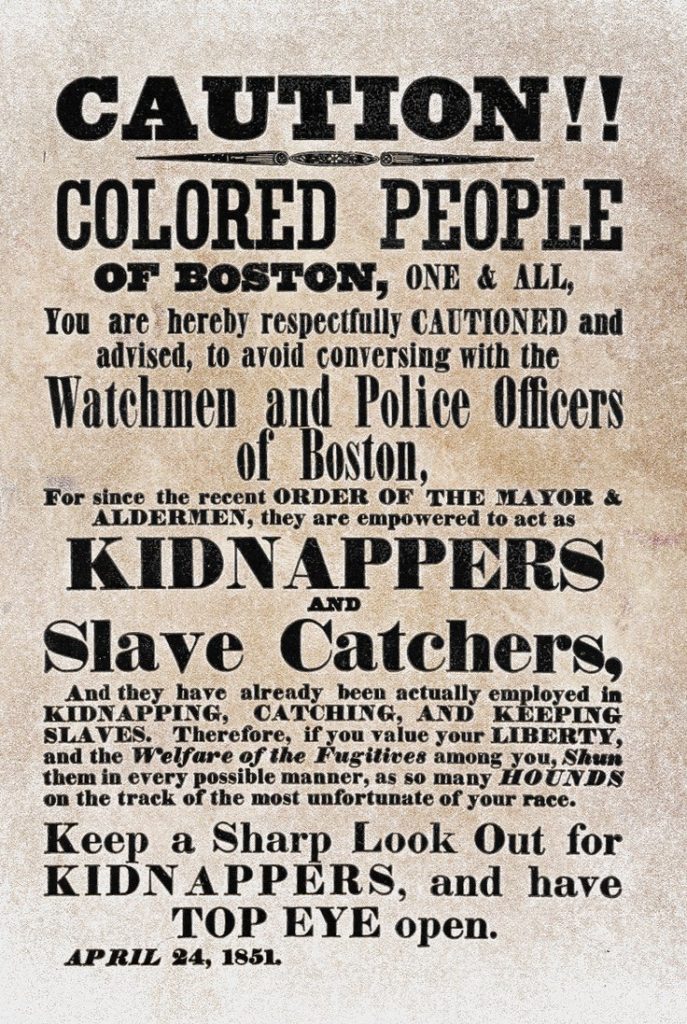The Fugitive Slave Act of 1850 was passed by Congress on September 18, 1850, as part of the Compromise of 1850. The act required all captured slaves to be returned to their master and those citizens of free states had to cooperate. It was nicknamed the "Bloodhound Law" and became the most controversial part of the Compromise of 1850.

Fugitive Slave Act of 1793 Facts
- Slaver owners were losing slaves often as many were escaping to the North successfully via the Underground Railroad and Northern abolitionists. While the deep south stayed somewhat insulated, the border states became a place for unstable institutions.
- The Fugitive Slave Act of 1793 was passed to enforce the return of runaway slaves by the authorities. However, as time passed and feelings about slavery changed, the law was largely ignored. Many of the Northern cities found a way to circumvent the law by passing "personal liberty laws."
- To make the law weaker, the U.S. Supreme Court ruled in Prigg v. Pennsylvania that states did not have to offer aid in the hunting or recapture of slaves.
- These things, coupled with Southern politicians blaming Northerners for interfering with Southern property rights, led to Congress enabling stricter laws regarding fugitive slaves in the United States.
Fugitive Slave Act of 1850 Facts
- The Fugitive Slave Act of 1850 took the basic language of the 1793 law and strengthened it.
- It penalized officials who did not arrest runaways and made them liable to a $1,000 fine. The suspected slave could not ask for a jury trial or testify on his or her own behalf. Anyone found aiding a runaway or even providing food or shelter was subject to six months in prison.
- It also loosened the proof needed to capture an escaped slave. Slave owners only needed to supply an affidavit to a Federal marshal to capture an escaped slave. This led to many free blacks being kidnapped and put back into slavery. Slaves had no rights and could not defend false accusations, so they did not have a chance.
- The act did slow down the number of escaped slaves in the North.
Nullification
- In 1855, the Wisconsin Supreme Court became the only state high court to declare the Fugitive Slave Act unconstitutional as a result of a case involving fugitive slave Joshua Glover and Sherman Booth, who led efforts that thwarted Glover's recapture. In 1859, in Ableman v. Booth, the U.S. Supreme Court overruled the state court.
- In November 1850, the Vermont legislature passed the "Habeas Corpus Law," requiring Vermont judicial and law enforcement officials to assist captured fugitive slaves. It also established a state judicial process, parallel to the federal process, for people accused of being fugitive slaves. This law rendered the federal Fugitive Slave Act effectively unenforceable in Vermont and caused a storm of controversy nationally. It was considered a "nullification" of federal law, a concept popular in the South among states that wanted to nullify other aspects of federal law, and was part of highly charged debates over slavery.
- Virginia governor warned that nullification could push the South toward secession, while President Millard Fillmore threatened to use the army to enforce the Fugitive Slave Act in Vermont.
Fallout
- The Fugitive Slave Act of 1850 ignited the abolitionists of the North and caused the issue to create a lightning rod of controversy.
- May abolitionists openly defied the law, and the underground railroad became more discreet.
- Harriet Tubman did not allow the law to affect her. It only changed her destination to Canada rather than the Northern states.
- When the Civil War broke out, Benjamin Butler used the law to the Union's advantage.
